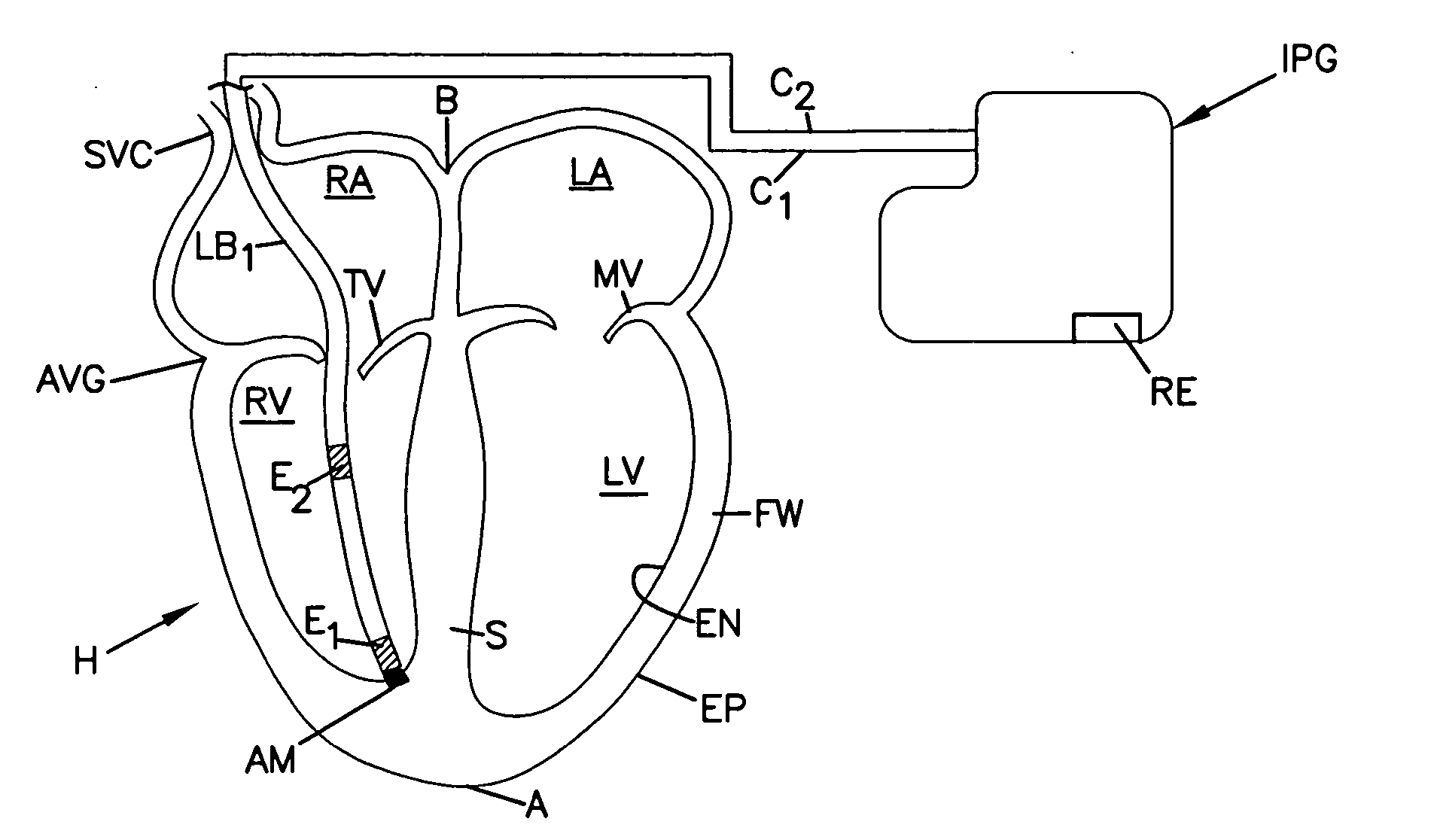Ventricular pacing
a ventricular pacing and ventricular pacing technology, applied in electrotherapy, physical therapy, artificial respiration, etc., can solve the problems of reduced hemodynamic performance, less understanding increased complexity of right atrium pacing, so as to reduce the risk of stroke, reduce the hemodynamic performance, and reduce the effect of mechanical contraction
- Summary
- Abstract
- Description
- Claims
- Application Information
AI Technical Summary
Benefits of technology
Problems solved by technology
Method used
Image
Examples
Embodiment Construction
[0058] Referring now to the various drawing figures, a description of the preferred embodiment of the present invention will now be provided. Incorporated herein by reference are the disclosures of U.S. Pat. No. 6,230,061 B1 to Hartung issued May 8, 2001 and U.S. Pat. No. 6,907,285 to Denker, et al., dated Jun. 14, 2004; U.S. patent application Publ. No. 2004 / 0153127 published Aug. 5, 2004; U.S. Pat. No. 6,643,546 B2 to Mathis et al. dated Nov. 4, 2003.
[0059] A. Placement of an Electrode Pair in the Right Ventricle
[0060] Generally speaking, the present invention is directed to creating a pulsed electrical field in the right ventricle with the field stimulating the musculature of the septum and free wall of the left ventricle to create coordinated contraction of the septum and free wall.
[0061] The present invention can be practiced with currently commercially available electrode leads and can also be enhanced with novel leads. FIG. 1 illustrates the invention in practice with such...
PUM
 Login to View More
Login to View More Abstract
Description
Claims
Application Information
 Login to View More
Login to View More - R&D
- Intellectual Property
- Life Sciences
- Materials
- Tech Scout
- Unparalleled Data Quality
- Higher Quality Content
- 60% Fewer Hallucinations
Browse by: Latest US Patents, China's latest patents, Technical Efficacy Thesaurus, Application Domain, Technology Topic, Popular Technical Reports.
© 2025 PatSnap. All rights reserved.Legal|Privacy policy|Modern Slavery Act Transparency Statement|Sitemap|About US| Contact US: help@patsnap.com



